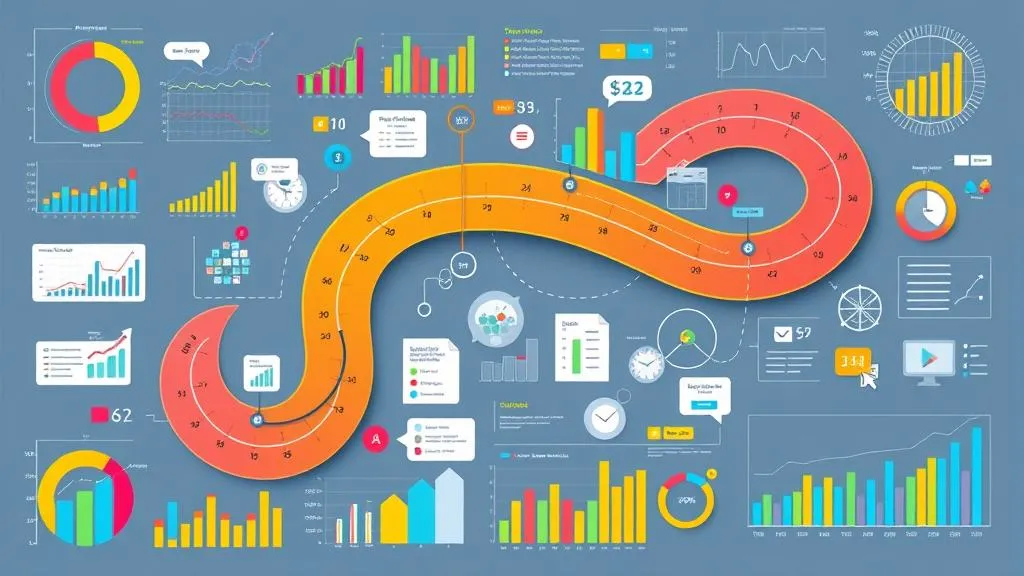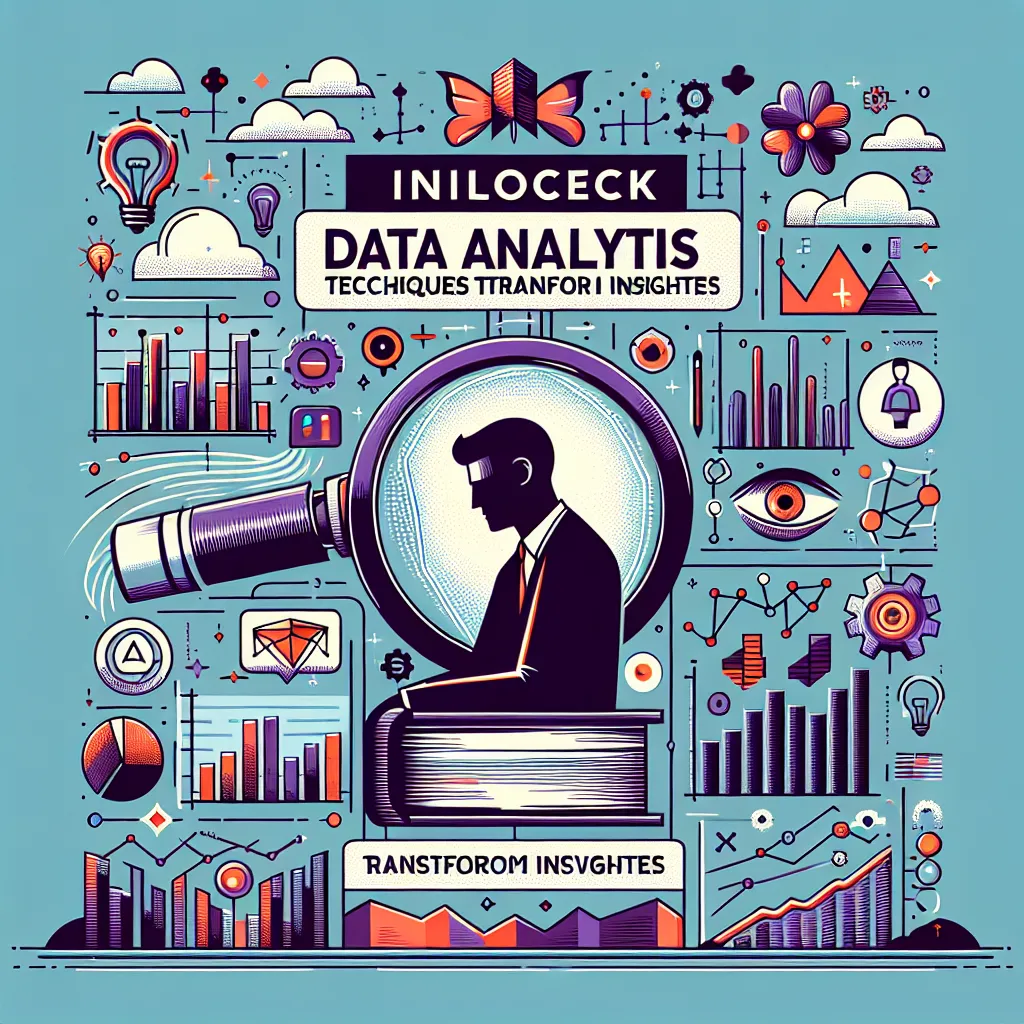
6 Steps to Navigate Your Data Analyst Career Path
Analytics · 19 Dec 2024
Ready to explore your data analyst career path? Discover 6 easy steps that guide you from learning the basics to landing your dream job in analytics.

data analyst job description: 7 steps to build skills, projects, and a hireable portfolio—start today and land entry roles faster.
Yes, you can become a data analyst with no experience by following structured learning, practical projects, and networking. This matters because employers increasingly value demonstrable skills over pedigree, and entry-level roles, internships, and freelance gigs can bridge the gap between theory and real work. In this guide you'll get a compact, actionable path: seven steps that move you from zero experience to a hireable portfolio. You'll learn which technical skills to prioritize, how to build projects that reflect real business problems, and how to present your work in a way hiring managers understand. I also explain how the data analyst job description typically maps to skills you can learn fast, like SQL, Excel, visualization, and basic statistics, and how to translate those keywords into portfolio items. Expect specific resources, a sample learning schedule, and short case studies showing how beginners landed roles within three to nine months. Read on if you want a friendly, no-fluff plan that helps you start today and track measurable progress toward your first data analyst role. Let's unlock your data potential together in practical steps.
Ever worried that no experience disqualifies you? You can start because many hiring managers prioritize demonstrable skills and problem-solving over years on a résumé. Entry-level roles, contract work, and internships exist to test practical ability, and remote gigs let you patch early gaps with real-world tasks. When you match your outputs to a typical data analyst job description, you show employers exactly what they want: clean data, clear visualizations, and actionable insights.
Here are concrete reasons you can begin today:
Compare typical employer expectations to beginner evidence to see how close you already are:
| Employer expectation | Beginner evidence |
|---|---|
| SQL queries | Three to five sample SQL scripts on GitHub |
| Data cleaning | Jupyter notebook showing cleaning steps |
| Visualization | Interactive dashboard or Tableau screenshots |
| Statistical reasoning | Short analysis explaining A/B test results |
| Communication | One-page case study or video walkthrough |
Start by mapping the language in a data analyst job description to small, demonstrable tasks you can complete this week.
Quick start checklist:
These micro-steps take hours, not months, and together they create a narrative that hiring managers recognize when scanning a typical data analyst job description. Start with one item.
Here's a practical seven-step plan you can follow this week to build skills, projects, and hiring signals.
Each step maps to common lines in a data analyst job description, so highlight the matching skill on your portfolio and in your resume.
| Step | Recommended resource | Time |
|---|---|---|
| SQL basics | Mode SQL, LeetCode, or SQLZoo | Two to four weeks |
| Excel | Exceljet, LinkedIn Learning | One to two weeks |
| Python | DataCamp, freeCodeCamp | Four to eight weeks |
| Statistics | Khan Academy, Coursera | Two to four weeks |
| Visualization | Tableau Public, Power BI tutorials | One to three weeks |
Use this table to schedule focused sprints; small, consistent practice beats unfocused studying.
Try a twelve week plan: weeks one to two SQL basics with daily one hour practice and two weekend projects; weeks three to four Excel and data cleaning with three notebook exercises; weeks five to eight Python and statistics with one end to end project; weeks nine to ten visualization and dashboard polishing; weeks eleven to twelve portfolio polish and outreach. For example, Maria completed this sequence and landed a junior analyst role after building a sales dashboard, publishing code on GitHub, and networking at two Meetup events. Start now.
What makes a portfolio stand out? Employers want clarity, reproducibility, and business impact, not flashy visuals without context.
Your portfolio should include three to five completed projects, each with a clean README, dataset link, code notebooks, key visuals, and a one-page case study that explains decisions and business outcomes.
Ask yourself: does each project answer a real question, use realistic data, and show an action someone would take?
Include in each README:
Project ideas that hiring managers respond to are simple but business-focused.
| Project | Dataset | Business question |
|---|---|---|
| Sales dashboard | Public retail sales dataset | Which products to prioritize to boost revenue? |
| Customer churn prediction | Telecom churn dataset | Which customers are at risk and why? |
| A/B test analysis | E-commerce experiment logs | Did the change improve conversion? |
| Marketing ROI | Ad spend and sales dataset | Which channels deliver best return? |
| Inventory optimization | Supply chain dataset | How to reduce stockouts and overstock? |
Add a short video or written walkthrough for at least one project to show communication skills.
One case study example: Sam analyzed three months of sales data, identified a $50k churn risk from a single product line, and proposed pricing and promotion changes that reduced projected churn by 18%.
Publish results on GitHub, and link each case study to a short LinkedIn post describing the business impact.
Next steps: pick one project idea from the table, define the business question in one sentence, set a two week sprint with focused daily work, publish code and a one-page case study, then ask for feedback in two relevant communities. Start sharing results publicly.
What gets you across the finish line? Preparation, storytelling, and small wins that show impact.
Tailor your resume and LinkedIn to mirror phrases from the data analyst job description, but always back claims with project links and measurable outcomes.
Practice common technical questions and a concise story for behavioral interviews using the STAR method: Situation, Task, Action, Result.
Interview prep checklist:
Short mock interview case: Alex solved a SQL performance task in 30 minutes, explained his optimization trade-offs, and sent a follow-up summary; two weeks later he received an offer.
| Question | Why interviewers ask it | How to answer briefly |
|---|---|---|
| Describe a project you led. | Assess hands-on experience. | Summarize objective, approach, your actions, and outcome. |
| How do you handle missing data? | Tests cleaning judgment. | Explain methods like imputation, deletion, and business impact. |
| Write a JOIN to combine orders and customers. | Checks SQL basics. | Describe JOIN type, key, and example result. |
| How do you measure feature impact? | Looks for causal thinking. | Discuss experiments, A/B tests, and confounders. |
| Tell me about a time you disagreed with stakeholders. | Assesses communication. | Use STAR to explain problem, your action, and the compromise. |
If you don’t get an offer, ask for feedback, iterate on projects that show the missing skill, and apply again with improvements. Over time your portfolio and interview fluency compound; many people land their first role after three to nine months of focused effort and visible outcomes. Start one focused project this week and schedule two mock interviews now.
You can become a data analyst with no experience by focusing on skills, projects, and clear storytelling that match what employers ask for. Start with SQL, Excel, and a scripting language, then complete three end-to-end projects that answer real business questions and publish them with readable code and case studies. Use the examples and checklists in this guide to map project work to the language found in a data analyst job description, and tailor your resume and LinkedIn accordingly. Practice concise explanations using STAR, time-box technical exercises, and ask for feedback in two communities to iterate quickly. If you follow a twelve-week sprint or a slower schedule that fits your life, measure progress by projects completed, interviews landed, and recruiter responses rather than time spent. Your confidence grows with visible outcomes, and small wins compound into a hireable narrative. Next steps: pick one project idea from the tables, schedule two hours daily for focused work this week, publish a README, and reach out to three contacts for feedback. I can review your README and give practical feedback to improve now

Analytics · 19 Dec 2024
Ready to explore your data analyst career path? Discover 6 easy steps that guide you from learning the basics to landing your dream job in analytics.

Analytics · 21 Aug 2025
Temukan tugas sebenarnya data analyst, skill yang dibutuhkan, dan cara menjadi analyst handal

Analytics · 13 Nov 2024
Unlock the world of data analytics with my simple guide to the 7 essential steps of data analysis. Let’s navigate the basics together and make sense of the numbers!

Analytics · 13 Nov 2024
Unlock the world of data analytics with my easy guide to the 5 essential steps. Join me as I break it down simply, just like choosing the perfect recipe!

Analytics · 19 Dec 2024
Ready to dive into the world of data analysis? Discover your roadmap to becoming a data analyst with easy steps tips and real-world examples that make learning fun

Analytics · 21 Nov 2024
Unlock the world of data with me as I share what I do as a data analyst and how my insights can help you make smarter decisions every day.

Analytics · 13 Nov 2024
Unlock the world of data analytics with my 5 simple steps. I’ll show you how these basics can transform your insights, much like finding a hidden treasure map!

Analytics · 17 Sep 2024
Discover what a data analyst does explore their role in interpreting data transforming insights into actionable strategies for businesses

Analytics · 20 Sep 2024
Discover effective data analysis strategies to enhance your skills as a data analyst and unlock valuable insights for informed decision making

Analytics · 20 Sep 2024
Discover essential data analysis techniques to enhance your skills as a data analyst and unlock valuable insights from complex data sets.